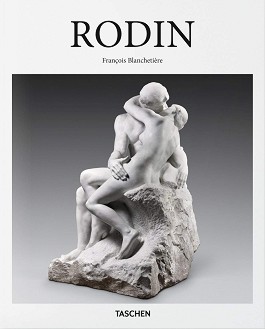George Eastman's career developed in a particularly American way. The founder of Kodak progressed from a delivery boy to one of the most important industrialists in American history, and a crucial innovator in photographic history. Eastman died in 1932, and left his house to the University of Rochester. Since 1949 the site has operated as an international museum of photography and film, and today holds the largest collection of its kind in the world, containing over 400,000 images and negatives - among them the work of such masters as Alfred Stieglitz, Edward Steichen, and Ansel Adams. Home also to 23,000 cinema ... |
|
A key figure in the international avant-garde, Piet Mondrian (1872 - 1944) was at once an extraordinary painter and leading art theoretician whose influence resonates to this day. Coining the term "Neo-plasticism", he pursued a style of painting composed only of primary colors against a grid of black vertical and horizontal lines and a white base background. Mondrian's vision was that this essential painting would help to achieve a society in which art as such has no place, but rather exists for the total realization of "beauty". With stints in Amsterdam, Paris, London, and New York, Mondrian drew ... |
|
Painter, sculptor, writer, film-maker, and all-round showman Salvador Dali (1904 - 1989) was one of the twentieth century’s greatest exhibitionists and eccentrics. One of the first artists to apply the insights of Freudian psychoanalysis to art, he is celebrated in particular for his surrealist practice, with such conceits as the soft watches or the lobster telephone, now hallmarks of the surrealist enterprise, and of modernism in general. Dali frequently described his paintings as "hand-painted dream photographs". Their tantalizing tension and interest resides in the precise rendering of bizarre elements and ... |
|
Изданието е триезично - на английски, немски и френски език. ... Originally published in France between 1876 and 1888, Auguste Racinet's Le Costume historique was in its day the most wide-ranging and incisive study of clothing ever attempted. Covering the world history of costume, dress, and style from antiquity through to the end of the 19th century, the six volume work remains completely unique in its scope and detail. This Taschen reprint presents Racinet's exquisitely precise color illustrations, as well as his delightful descriptions and often witty commentary. Spanning everything from ancient Etruscan ... |
|
Multilingual Edition: English, French, German. Editors: Burkhard Riemschneider, Henk Schiffmacher. ... Whether you’re thinking of getting a tattoo or just want to see to what lengths others have gone in decorating their bodies, this is the book to check out. "1000 Tattoos" explores the history of the art worldwide via designs and photos - from 19th century engravings to tribal body art, from circus ladies of the ’20s to classic biker designs. For years, Henk Schiffmacher has been recognised as one of the stars of the tattoo scene. His Amsterdam studio attracts countless tattoo pilgrims, and he also runs the ... |
|
A new edition of the classic and timely record of refugees and migrants on the move. ... It has been almost a generation since Sebastiao Salgado first published Exodus but the story it tells, of fraught human movement around the globe, has changed little in 16 years. The push and pull factors may shift, the nexus of conflict relocates from Rwanda to Syria, but the people who leave their homes tell the same tale: deprivation, hardship, and glimmers of hope, plotted along a journey of great psychological, as well as physical, toil. Salgado spent six years with migrant peoples, visiting more than 35 countries to document ... |
|
"In Genesis, my camera allowed nature to speak to me. And it was my privilege to listen." Sebastiao Salgado On a very fortuitous day in 1970, 26-year-old Sebastiao Salgado held a camera for the first time. When he looked through the viewfinder, he experienced a revelation: suddenly life made sense. From that day onward - though it took years of hard work before he had the experience to earn his living as a photographer - the camera became his tool for interacting with the world. Salgado, who "always preferred the chiaroscuro palette of black-and-white images," shot very little color in his early ... |




